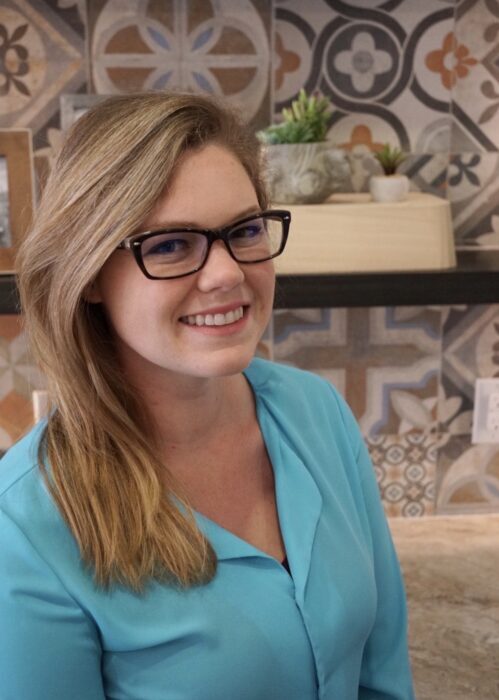
Lisa Whisenant, OTR
Lisa Whisenant, OTR
Lisa Whisenant – Endometriosis Occupational Therapist
Summary: Lisa Whisenant is a compassionate endometriosis occupational therapist of Genesis PT & Wellness in Dallas, Texas, dedicated to helping patients move, breathe, and live with less pain. Lisa Whisenant combines thorough listening with evidence-based care, tailoring every session to each person’s daily goals and lifestyle.
Her holistic approach addresses the entire body: diaphragmatic-breathing coaching, core and pelvic-floor coordination, and gentle abdominal lengthening restore balanced movement. She integrates visceral mobilization, myofascial release, cupping, and dry needling to ease tension, while functional positioning and mobility training support pain-free work, exercise, and rest. Education on bowel, bladder, and sexual routines—plus adaptive tools like squatty potties, dilators, wands, and vibration—empowers patients to self-manage symptoms between visits. Warm, professional, and collaborative, Lisa Whisenant helps people with endometriosis regain control, confidence, and comfort in everyday life.
Visit types: Office/Hospital/Virtual/Home
Spoken languages: English
Interpreting services for other languages: No
Philosophy of care and typical treatment strategies: I treat holistically, looking at the full body. Diaphragmatic breathing education and techniques, proper core and pelvic floor contract/relax, lengthening abdominals, functional positioning and mobility, bowel, bladder, and sexual habits and routines, visceral mobilization, myofascial release, cupping, dry needling, and adaptive equipment/modalities such as squatty potty, dilators/wands, and vibration.

Kara Mortifoglio, PT, DPT
Kara Mortifoglio, PT, DPT
Kara Mortifoglio – Endometriosis Physical Therapist
Summary: Kara Mortifoglio is an experienced endometriosis physical therapist in New York who takes a holistic and collaborative approach to pelvic health. At Solstice Physiotherapy, Kara Mortifoglio integrates advanced techniques and personalized care to help patients manage pain and improve daily function.
Her treatment plans often include visceral mobilization, myofascial release, internal manual therapy, bladder and bowel retraining, biofeedback, and dilator training. She also uses therapeutic exercise, Pilates, and postural re-education to support long-term recovery. Kara Mortifoglio believes in treating the whole person, which is why she regularly collaborates with pelvic pain specialists, acupuncturists, and mental health professionals to ensure comprehensive care. Patients appreciate her compassionate, multidisciplinary approach, which empowers them to feel supported, informed, and confident in their healing process.
Visit types: Office/Hospital
Spoken languages: English
Interpreting services for other languages: No
Philosophy of care and typical treatment strategies: I like to use a hollistic approach, including: bladder/bowel techniques and retraining, visceral mobilization, myofascial release, biofeedback, dilator training, internal manual manipulation, anorectal manometry balloons, therapeutic exercise, pilates, postural re-education. Along with this, I often work in conjunction with pelvic pain specialists, acupuncturists, talk therapists, and many other practitioners.
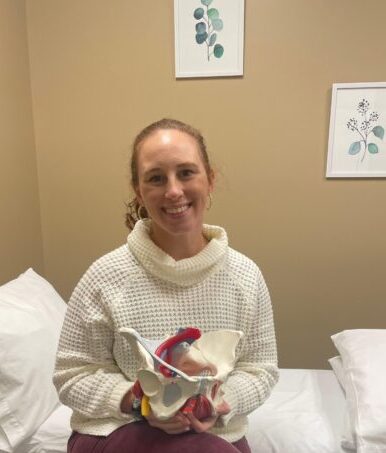
Kelly Resha, PT, DPT
Kelly Resha, PT, DPT
Kelly Resha – Endometriosis Physical Therapist
Summary: Kelly Resha is a compassionate endometriosis physical therapist in Martinez, Georgia, dedicated to helping women feel truly heard and supported in their pelvic health journey. At Georgialina Physical Therapy, Kelly Resha uses a hands-on, whole-body approach to address the many factors contributing to pelvic pain and dysfunction.
With advanced training in visceral mobilization, internal pelvic floor therapy, myofascial decompression (cupping), and targeted treatment of the hips, lumbar spine, and abdominal wall, she tailors care to meet each patient’s unique needs. Kelly Resha believes healing starts with listening, and she creates a safe, empowering space for her patients to feel seen, understood, and guided toward lasting relief. Through her expert care, women living with endometriosis can gain greater comfort, mobility, and confidence in their daily lives.
Visit types: Office/Hospital
Spoken languages: English, some Spanish (not fluent)
Interpreting services for other languages: No
Philosophy of care and typical treatment strategies: I believe that every woman needs to be heard when it comes to their pelvic pain. I am trained in a hands-on approach of visceral mobilization, internal pelvic floor therapy, myofascial decompression (cupping), and treatment of the “other pieces of the puzzle,” including the hip/lumbar spine and abdominal wall.
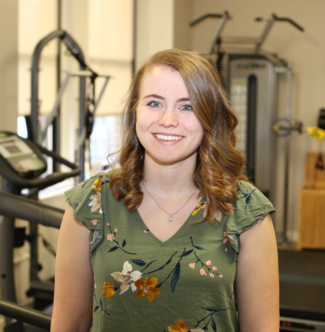
Claire Hamnett, PT, DPT
Claire Hamnett, PT, DPT
Claire Hamnett – Endometriosis Physical Therapist
Summary: Claire Hamnett is a dedicated endometriosis physical therapist in New York who takes a whole-person approach to pelvic health. At Spruce Physical Therapy, Claire Hamnett blends expertise in orthopedics with a deep understanding of bladder, bowel, and sexual function to support patients in restoring mobility, reducing pain, and reclaiming their quality of life.
Through evidence-based care, Claire offers hands-on techniques like myofascial release, along with targeted exercises to strengthen muscle imbalances. She incorporates yoga, Pilates, and sports-specific interventions to meet each patient’s unique needs. With a strong focus on collaboration, Claire Hamnett works closely with other specialists to ensure patients receive the most comprehensive and effective care possible. Passionate about advocacy and empowerment, she is committed to helping those with endometriosis feel heard, supported, and truly cared for throughout their healing journey.
Visit types: Office/Hospital/Virtual
Spoken languages: English
Interpreting services for other languages: No
Philosophy of care and typical treatment strategies: At Solstice Physiotherapy, we specialize in pelvic health. Our goals are to restore function and eliminate pain so that patients can improve their daily functionality. We treat a complex part of the body by integrating our knowledge of orthopedics, bladder, bowel, and sexual function to fully understand the entire person. Using an interdisciplinary approach, we focus on communicating with other specialists and providers to create an appropriate treatment plan and provide the best care to our patients. We practice myofascial release, strengthening associated muscle weakness, and providing evidence-based intervention. We also perform yoga, pilates, and sports-specific intervention. We are committed to helping patients decrease symptoms and live the life they want, pain-free. We believe in empowering our patients and advocating for them.

Niva Herzig, PT, DPT
Niva Herzig, PT, DPT
Niva Herzig – Endometriosis Physical Therapist
Summary: Niva Herzig is a compassionate and highly skilled endometriosis physical therapist based in Englewood, New Jersey. With a patient-first philosophy, Niva Herzig creates a safe, supportive space where individuals feel heard and empowered in their healing journey. She combines her expertise in physical therapy with training in health coaching and sexual counseling to provide holistic, personalized care.
At Core Dynamics Physical Therapy, Dr. Herzig uses a variety of hands-on techniques—including myofascial release, visceral mobilization, soft tissue therapy, and cupping—alongside neuromuscular re-education and pain science approaches such as guided imagery and graded exposure. She also incorporates tailored exercise and movement strategies to restore function and reduce pain. Patients working with Niva Herzig benefit from her integrative, evidence-based methods and her deep commitment to improving the quality of life for those living with endometriosis.
Visit types: Office/Hospital/Virtual
Spoken languages: English, Hebrew
Interpreting services for other languages: No
Philosophy of care and typical treatment strategies: My approach is patient first: I provide space and time to hear the story, guidance, and resources when needed. My background, in addition to PT, includes health coaching and sexual counseling (in the process). PT approach using manual therapy (myofascial, visceral mobilization, soft tissue, cupping, etc.), neuromuscular re-Ed: pain science (graded exposure, guided imagery, etc.), exercise, and movement.

Juan Michelle Martin, PT, DPT
Juan Michelle Martin, PT, DPT
Juan Michelle Martin – Endometriosis Physical Therapist
Summary: Juan Michelle Martin is a dedicated pelvic health specialist at JMM Health Solutions in Georgia, USA, offering comprehensive care for patients with endometriosis. Juan Michelle Martin believes in a holistic approach that addresses not only pelvic floor dysfunction but also lifestyle, nutrition, and emotional wellness. Treatment sessions often include manual therapy, myofascial release, visceral mobilization, neuromuscular re-education, and relaxation techniques tailored to each patient’s needs. Understanding that endometriosis can affect many aspects of life, Juan Michelle Martin works collaboratively with other healthcare professionals, such as nutritionists, GI specialists, and gynecologists, to provide well-rounded care. At JMM Health Solutions, patients are treated with compassion, respect, and individualized attention, ensuring they feel heard and supported. Juan Michelle Martin’s warm and patient-centered philosophy helps those with endometriosis find relief and improved quality of life through personalized, empathetic care.
Visit types: Office/Hospital/Virtual
Spoken languages: English
Interpreting services for other languages: No
Philosophy of care and typical treatment strategies: I believe that patients with endometriosis need to be approached from a comprehensive and holistic perspective. These clients often will have so many things going on. My sessions will typically include pelvic floor therapy comprising manual therapy, myofascial release, visceral mobilization, mobility work, visual imagery, relaxation, neuromuscular re-education, and education. They will also entail lifestyle habits and changes as necessary, nutrition components, wellness, and lifestyle management. I love working collaboratively with other professionals and often refer these clients as needed to other professionals who can also serve them, including nutritionists and functional medicine providers, GI specialists, GYNs, etc.
What should be known about you: I founded my practice, JMM Health Solutions, on being a beacon within my community. When clients come in, they are not a number, nor do I want them to feel that way. They need to feel cared for, respected, and listened to. That might mean that they need a listening ear, a shoulder to cry on, and not just a clinician, and I provide that within my office. Patients with endometriosis have been through so much, and I believe that compassionate care is truly the way to serve this population best.
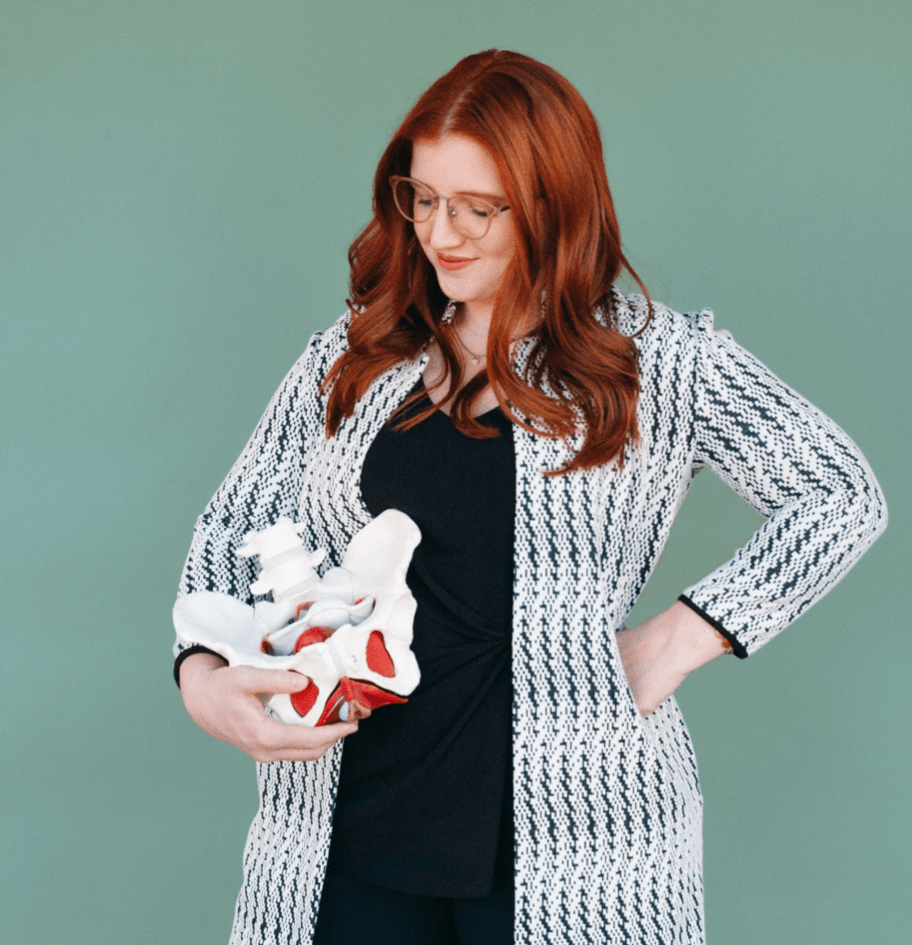
Rebecca Patton, PT, DPT
Rebecca Patton, PT, DPT
Rebecca Patton – Endometriosis Physical Therapist
Summary: Rebecca Patton is a dedicated pelvic health physical therapist based in Arizona, committed to providing compassionate, patient-centered care. Rebecca Patton specializes in supporting patients with endometriosis by focusing on pain management before and after surgery. Her approach includes calming techniques to downregulate the nervous system, such as visceral and nerve mobilization, breathing exercises, and dry needling when appropriate. Understanding that every patient’s journey is unique, Rebecca Patton tailors treatment plans to individual goals—whether that involves pelvic floor retraining, managing bowel and bladder symptoms, or returning to joyful activities. She advocates for inclusive, gender-affirming care, ensuring a welcoming environment for the LGBTQ+ community. Rebecca Patton prioritizes clear communication with interdisciplinary teams to help patients navigate complex care pathways with confidence and ease. Her practice reflects empathy, expertise, and a deep commitment to empowering each person on their healing journey.
Visit types: Office/Hospital
Spoken languages: English
Interpreting services for other languages: Yes
Philosophy of care and typical treatment strategies: If I suspect endo based on their symptoms, my main priority is getting them to an endo specialist for a formal diagnosis and surgery. That can take a few months for them to get paperwork together and finally see the specialist. During that time during physical therapy, we focus on pain management.
This is typically in a calm environment (dim lighting and meditation tones are helpful to relax the nervous system). I provide an environment that helps downtrain the CNS with visceral and nerve mobilization, passive mobility, and breathing techniques.
After surgery, it depends on the person and their individual goals. Some want to continue visceral mobility. Some want to focus on pelvic floor retraining and possibly integrating dilators. Some are trying to manage bowel and bladder symptoms.
Others are trying to get back to exercise or recreational activities. I use dry needling if appropriate and if I feel someone’s nervous system will respond well. Improving management of bowel and bladder hygiene can be accomplished through pelvic floor retraining, breath work, CNS down training, visceral and fascism mobility and getting back to joyful activities.
Interdisciplinary care and communication are important and can involve the surgeon/specialist, GYN, PCP, nutritionist, acupuncturist, GI/colorectal doc, or urogynecologist, just to name a few. I try to help my patients navigate this complex system so they can prioritize their care and not feel as overwhelmed. The most important thing I have learned is that although endo can have a lot of similar symptoms, every patient is individual in their goals, factors that exacerbate their symptoms, activity tolerance, and overall lifestyle. I try to meet them where they are at for treatment, and goals may change over time.
More information: My main priority is providing a welcoming space for the LGBTQ+ community. I am an advocate for gender-inclusive language, inclusive and affirming intake paperwork, and not assuming heteronormative or cisnormative lifestyles when asking my patients about sexual health and gender identity.
I always have my pronoun pin on. I want to normalize transgender individuals seeking care for pelvic physical therapy.

Rebekah Slafka, PT, DPT
Rebekah Slafka, PT, DPT
Rebekah Slafka – Endomteriosis Physical Therapist
Summary: Rebekah Slafka is a dedicated pelvic floor physical therapist passionate about empowering patients with compassionate, individualized care. Based in Ohio, Rebekah Slafka is one of the few therapists in the state with PRPC accreditation from the Herman & Wallace Pelvic Rehabilitation Institute and is a certified Endometriosis Physical Therapist on iCareBetter. She offers a biopsychosocial approach, integrating manual techniques such as cupping, dry needling, myofascial release, and visceral mobilizations to address pelvic floor dysfunction in women, men, and the LGBTQIA+ community. Having personally experienced pelvic floor challenges, Rebekah Slafka understands the profound impact of chronic pain and pelvic health issues. Her goal is to support patients as both a knowledgeable provider and compassionate partner on their journey to lasting wellness. Outside of work, she enjoys renovating her farmhouse and spending quality time with her family in Lebanon, Ohio.
Visit types: Office/Hospital
Spoken languages: English
Interpreting services for other languages: Yes
Philosophy of care and typical treatment strategies: As a licensed pelvic floor physical therapist, I’m passionate about all things pelvic floor—and providing care that helps patients feel seen, heard, loved, and empowered. I have been working in this specialty since 2018, with expertise in helping patients—women, men, and those within the LGBTQIA+ population—with diverse diagnoses. I am one of the few physical therapists in Ohio to earn a PRPC accreditation from the International Herman & Wallace Pelvic Rehabilitation Institute, and I’m also a certified Endometriosis Physical Therapist on iCareBetter. I am manually trained and believe in taking a biopsychosocial approach to care. My specialties include cupping, integrative dry needling, muscle energy techniques, visceral mobilizations, myofascial release, and more. Beyond my skillset, I’ve also experienced living with pelvic floor dysfunction and chronic pain. I know firsthand how much pelvic floor dysfunction can affect your life—and how hard it can be to find a provider who understands and advocates for you. My goal is to be both your provider and your partner in achieving sustainable, functional wellness. When I’m not doing all things pelvic floor, you’ll find me fixing up our Lebanon farmhouse and spending time with my husband and two daughters.

Nicole Cozean, PT, DPT
Nicole Cozean, PT, DPT
Nicole Cozean, Endometriosis Physical Therapist
Summary: Nicole Cozean is a dedicated pelvic health specialist focused on helping patients with endometriosis find relief and improve quality of life. At PelvicSanity Pelvic Health & Wellness in California, Nicole Cozean uses a compassionate, patient-centered approach to address pain caused by musculoskeletal triggers in the abdomen and pelvic floor. Her treatments include myofascial release, visceral manipulation, and pelvic floor trigger point release. Nicole also helps reduce central nervous system sensitization through education, breathing exercises, and vagus nerve stimulation, providing comprehensive support for symptom management. She prepares patients for excision surgery and aids recovery with techniques like scar tissue mobilization. Additionally, Nicole Cozean addresses common symptoms such as painful intercourse, low back pain, and hip or groin pain, often experienced alongside endometriosis or related pelvic pain conditions. Her goal is to empower patients with effective, holistic care tailored to their unique needs.
Visit types: Office/Hospital
Spoken languages: English
Interpreting services for other languages: Yes
Philosophy of care and typical treatment strategies: We know from the literature that the majority of patients with endometriosis have a trigger or tender points in the abdomen and/or pelvic floor that can contribute to symptoms. We work to alleviate pain associated with musculoskeletal drivers with a variety of techniques, including myofascial release, visceral manipulation, and pelvic floor trigger point release.

Jennafer Vandevegte, PT, MSPT
Jennafer Vandevegte, PT, MSPT
Jennafer Vandevegte – Endometriosis Physical Therapist
Summary: Jennafer Vandevegte is a dedicated pelvic health therapist based in Grand Rapids, Michigan, who provides compassionate, personalized care for her patients. Jennafer Vandevegte believes in a team approach, working closely with each individual to honor their unique story and goals. Her treatments blend evidence-based techniques such as visceral therapy, nervous system down-regulation, and myofascial release with holistic practices like yoga, stretching, meditation, and mindfulness. Jennafer Vandevegte also emphasizes the importance of diet, nutrition, and self-care in promoting overall pelvic health. Committed to walking alongside her patients on their journey to improved wellness, she creates customized plans that support healing and empower individuals to regain control of their bodies. With a warm and professional approach, Jennafer Vandevegte offers patient-centered care at Spectrum Health Rehabilitation in Michigan, ensuring each patient’s experience is both effective and supportive.
Visit types: Office/Hospital
Spoken languages: English
Interpreting services for other languages: Yes
Philosophy of care and typical treatment strategies: It’s an honor and a privilege to walk with someone on their journey to improve their pelvic health. I use a team approach with my patients, taking into account their unique story and goals. I utilize multiple approaches such as visceral nervous system downregulation, my official work, yoga, stretching, meditation and mindfulness, diet and nutrition, and self-care.
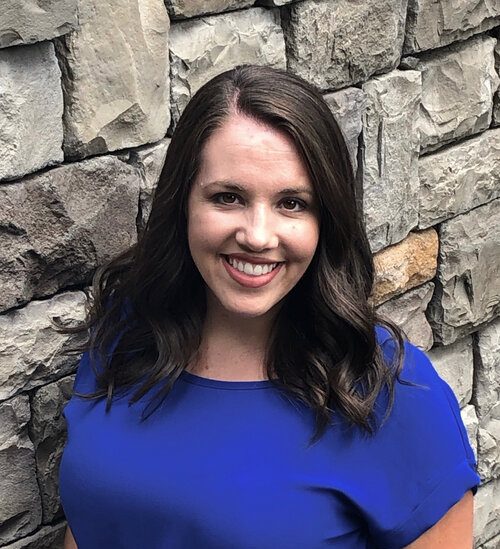
Jessica Reale, PT, DPT
Jessica Reale, PT, DPT
Jessica Reale – Endometriosis Physical Therapist
Summary: Jessica Reale is a skilled physical therapist based in Georgia, USA, who specializes in supporting patients with endometriosis through a multidisciplinary and evidence-based approach. Jessica Reale works closely with excision specialists and pelvic pain physicians to provide comprehensive care. Her therapy focuses on helping patients move more freely with less pain by incorporating gentle manual therapies and yoga-inspired movements.
Jessica Reale uses a range of manual techniques, including visceral mobilization, myofascial release, scar tissue mobilization, cupping, and dry needling, tailored to each patient’s needs. She also emphasizes behavioral education, mindfulness, and coaching to optimize bowel, bladder, and sexual health. Offering both office and virtual visits, Jessica Reale guides patients toward effective self-care strategies to improve their overall well-being and quality of life. Her warm, patient-centered care makes her a trusted choice for individuals managing endometriosis.
Visit types: Office/Hospital, and Virtual
Spoken languages: English
Interpreting services for other languages: Yes
Philosophy of care and typical treatment strategies:
I believe most people with endometriosis require a multidisciplinary approach. I work with amazing excision specialists and other physicians specializing in pelvic pain. As far as physical therapy, my approach is guided by current evidence in pain science. My goal is to help people move more freely with less pain. I love yoga and use many of these movements in my practice. I also enjoy gentle manual therapies. I use a variety of manual therapy techniques, including visceral mobilization, myofascial release, scar tissue mobilization, connective tissue mobilization, positional release techniques, cupping, and dry needling. I also help patients through behavioral education and coaching for mindfulness, meditation, and optimizing bowel, bladder, and sexual health. I use both external and internal techniques, and my goal is to help my patients learn self-care strategies and optimize their health.

Caitlyn Rumsey, PT, DPT
Caitlyn Rumsey, PT, DPT
Caitlyn Rumsey – Endometriosis Physical Therapist
Summary: Caitlyn Rumsey is a dedicated pelvic health physical therapist who brings a unique, personal perspective to her care, as she herself lives with endometriosis. This firsthand experience allows Caitlyn Rumsey to deeply understand the challenges faced by her patients and provide compassionate, empathetic treatment. Based in Kansas, USA, her approach goes beyond the pelvis to consider the entire movement system from head to toe.
Caitlyn Rumsey focuses on patient-centered care, emphasizing education and autonomy in the healthcare journey. Recognizing that individuals with endometriosis often have sensitized, overactive nervous systems, she uses gentle, evidence-based techniques such as myofascial release, breathwork, yoga, and nervous system desensitization. Caitlyn’s holistic and personalized treatment supports improved function and quality of life for those living with pelvic pain and endometriosis, making her a trusted partner in your healing process.
Visit types: Office/Hospital
Philosophy of care and typical treatment strategies:
As a pelvic health physical therapist who also has endometriosis, I believe I offer a unique perspective for treatment with a personal connection. I truly empathize with all the aspects of life touched by endometriosis and pelvic pain. My practice offers holistic evaluation and treatment, looking beyond the pelvis at the movement system from head to toes. The care is patient-centered, with the patient as a crucial part of the healthcare team. I help my patients navigate their care and value autonomy with healthcare education. Individuals with endometriosis often have overactive nervous systems and responses. It is important to use gentle treatment modalities for the sensitized system. This may include external and internal myofascial work, yoga, breathwork, and desensitization of the nervous system.

